During my recent Disney press trip, I had the opportunity to visit DisneyToon Studios to chat with Bobs Gannaway, Director, and Ferrell Barron, Producer, of Disney’s Planes Fire and Rescue. Travel and accommodations were covered by Disney but all thoughts and opinions are my own. Live images were taken by me at DisneyToon Studios (except for the photo of me) and screen shots of the film are courtesy of Disney.
Its a passion, not a job
Disney’s PLANES, released in August 2013, was an instant hit with young kids and parents alike, so it just seemed natural when Planes Fire and Rescue came to theaters barely a year later.
Bobs Gannaway and Ferrell Barron, director and producer of Planes Fire and Rescue, started our interview with pointing out that animated movies like this are a huge commitment and preparation starts years before anyone ever hears about the movie. Bobs Gannaway said, “You know, it’s five years of your life to make. Even though this came out a year later (after Planes), still, we didn’t make it in a year.”
Bobs went on to talk about working in on a long term project like this, “They can’t feel like assignments, because they are something that you basically pour yourself into. So (John Lasseter) waits for his filmmakers to be inspired by something, and to go out there, and research it, and meet the people, ride in the vehicles, and come back and tell him and everyone on the team what you’ve discovered that was cool… Because it’s a huge commitment, and it has to be a passion, not an assignment.“
Planes Fire and Rescue: Paying tribute to firefighters
I was impressed that after the field research that the Planes Fire and Rescue team did to prepare for the movie, they were left with the desire to make the movie a tribute to firefighters around the world. The real firefighters who were the movie’s inspiration and consultants ended up having a profound impact on the movie makers.
Producer Ferrell Barron said, “(We wanted) to pay tribute to the firefighters around the world. We’re focusing on wildfire air attack, but it’s really about all firefighters. I mean, it was really important for us, after we’d met them, they became more than just consultants. They really became our friends — I still stay in touch with (several of them). I mean, they really became our friends. And so it was important for us to do right by them, because of all that research, bringing that truth and accuracy to our filmmaking, so that all firefighters really are honored.
In Planes Fire and Rescue, there is a wall of fame that actually mentions real Cal Fire airplanes, with the actual aircraft numbers that went down. Ferrell said, “It’s such an honor that we could honor those brave men and woman that actually lost their lives. The public’s not gonna know that, but they (the firefighters) saw it…”
Bobs continued, “Someone picked up on that. This aircraft here is one that actually crashed in Cal Fire, and so, we don’t say that in the movie, but that’s the number of the plane that crashed. And when we showed the movie to Cal Fire, they said, ‘that’s a lovely thing to do.’
The Planes Fire and Rescue team worked closely with a team of firefighters at Cal Fire throughout the filmmaking process to make sure that all of the details were correct, down to little things that the characters said.
Bobs talked about working with Travis Alexander, one of their main Cal Fire consultants. “All of the radio chatter, what they would say, ‘split load,’ and things like that. And then when Travis saw the footage, he changed it. He goes, ‘Oh, I didn’t realize that those were 110 feet high. That would be different load levels. Let’s change it from four to six.’ Things like that. So, nobody really will know that, but it’ll feel right. All of those details add up to it feeling real. And then what they’re saying is accurate. And the flight is accurate. And all those things. All help you nest and kind of settle into the film. The world and the characters all feel real to you.”
Making an animated movie
Because making an feature-length animated film is so different from making a live-action movie, we asked Bobs Gannaway and Ferrell Barron to describe the process, from animation to deciding which scenes and story lines to keep and which to cut.
Bobs began, “That’s what’s so great — and hard — about the animation process. It’s very different than a live-action (film) where you’ve written a script and you go out and you shoot, and you have lots of coverage, and then it’s made kind of in editorial. And then maybe you do re-shoots and things like that. In a live action movie, it gets turned around fairly quickly, and by that I mean a year and a half. These take five plus years to make. So, what we do is, we write a script, and then we do boards and temp dialogue and temp music, and then put it together in the editorial, and then we watch it.”
He continued, “We all get notes, and then we tear down and rebuild it, and tear down and rebuild it. It’s a constant. So the movie you’re seeing is like, the eighth or ninth version of the film. During that time, the two years or two and a half or three years, or however long you’re doing that, you start to sort of figure out, ‘We don’t need that,’ or ‘This needs to move along quickly,’ or ‘There’s a pace issue.'”
I could relate to the need to have different sets of eyes look at the footage and weigh in on the story. Sometimes I need the same thing done for my writing.
Bobs continued talking, “There was a scene in the movie that was in for the longest time, where Blade has crashed. And Dusty’s flying around, and he calls for help, and then we had this very lovely scene where Windlifter was carrying Blade back to base. And Dusty’s flying alongside, and we’re playing a temp music in there, something like, A River Once Stood. And everybody was like, ‘Oh. This is so emotional, and wonderful, and oh, I’m just feeling so much,’ and then finally, John Lasseter said, ‘Yeah. That’s great, and everything, but there’s something bugging me about it.’ And we sat there, looked at it for a while. And he goes, ‘Oh, I know what it is. He’s still alive. Ambulances don’t go slow. They go fast. You know? Funerals go slow. He’s not dead.’ So we’re like, ‘Oh my gosh, they should be like, we gotta get him back, and on the base, and then Maru is doing triage right there in the moment.’ So, that scene was in there for two years before we realized that it was completely and utterly wrong, and the characters were not reacting in this scene.”
“We had fallen so in love with the emotion,” Bobs said. “We had blinders on to this emotion, we didn’t look at it relative to what would happen in real life. But, what happened was, that little moment where they’re bringing Blade back, we gave to after Dusty crashes where we’re not sure whether Dusty is alive or not. So we still got to have that moment. We just gave it to a different character.”
How voice over actors enhance the script
Ferrell talked about the importance of having high caliber actors doing voice over. He said that high caliber actors will bring more to the character than what the script may provide.
Ferrell said, “Bobs is really good about having the script being a starting point. But, if you’re the character, if you feel like you’re gonna say something else, say what you feel like you’re gonna say. And, most of the time, a lot of it went in the movie, stuff that they may have just ad-libbed. And Bobs liked it better. And that’s what we keep.”
Of course, that comment prompted someone to ask if they had a favorite ad lib line from the movie. Bobs said, “‘Yeah, they’re real,’ was an ad lib.”
Ferrell continued his thought, “Julie Bowen (said that), when her pontoons go down. ‘Yeah, they’re real.’ And that’s Julie Bowen. She’s such a great comedic actress. And she’s great at improv, and she was perfect for that role, because she she brought so much more to the table. That’s one of the funniest lines in the movie, right? So, thank goodness we had her.”
I’m grateful that they had EVERYONE, because everything worked so well together – from the details that only a few people will notice and appreciate to the perfectly cast voice actors who made their characters come alive. It’s amazing how much detail and time go into an animated movie!
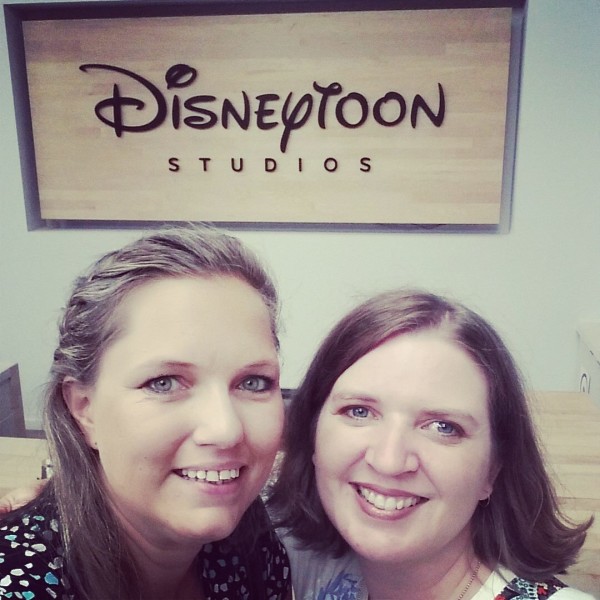
Me with Teresa from Making It All Work at DisneyToon Studios
Can’t wait to see Planes Fire and Rescue? You’re in luck – Planes Fire and Rescue will be available on Blu-Ray/DVD and Digital November 4!
Love Planes? Be sure to check out my Planes Activity Sheets here, here, and here.
© 2014, Food Fun Family. All rights reserved.


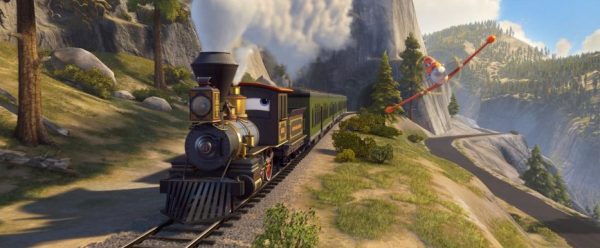
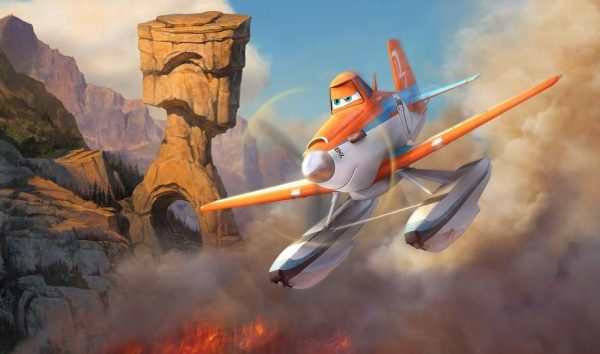

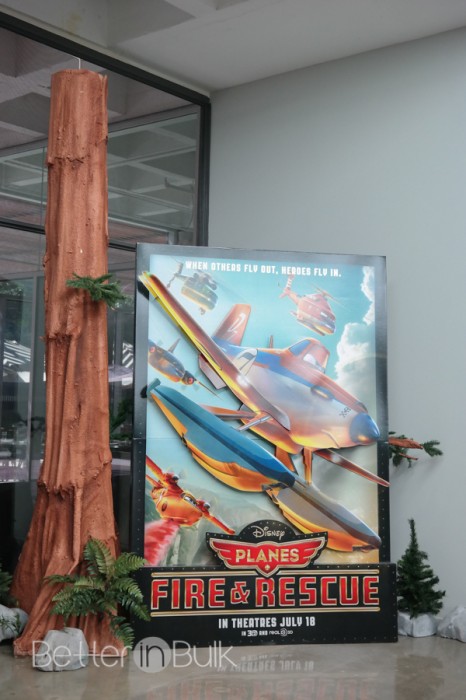
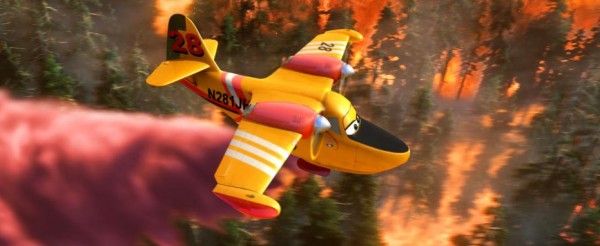
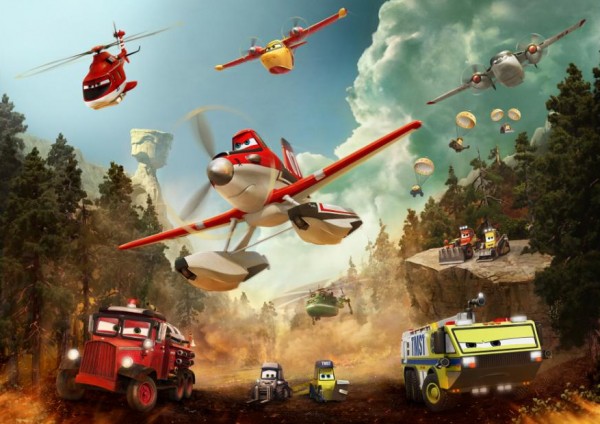

We have not seen this movie yet. I am excited to see this with my grandson, I know he is really going to like it.
Kids love planes and are always pointing them out in the sky, when the movie came out I knew they would love it!